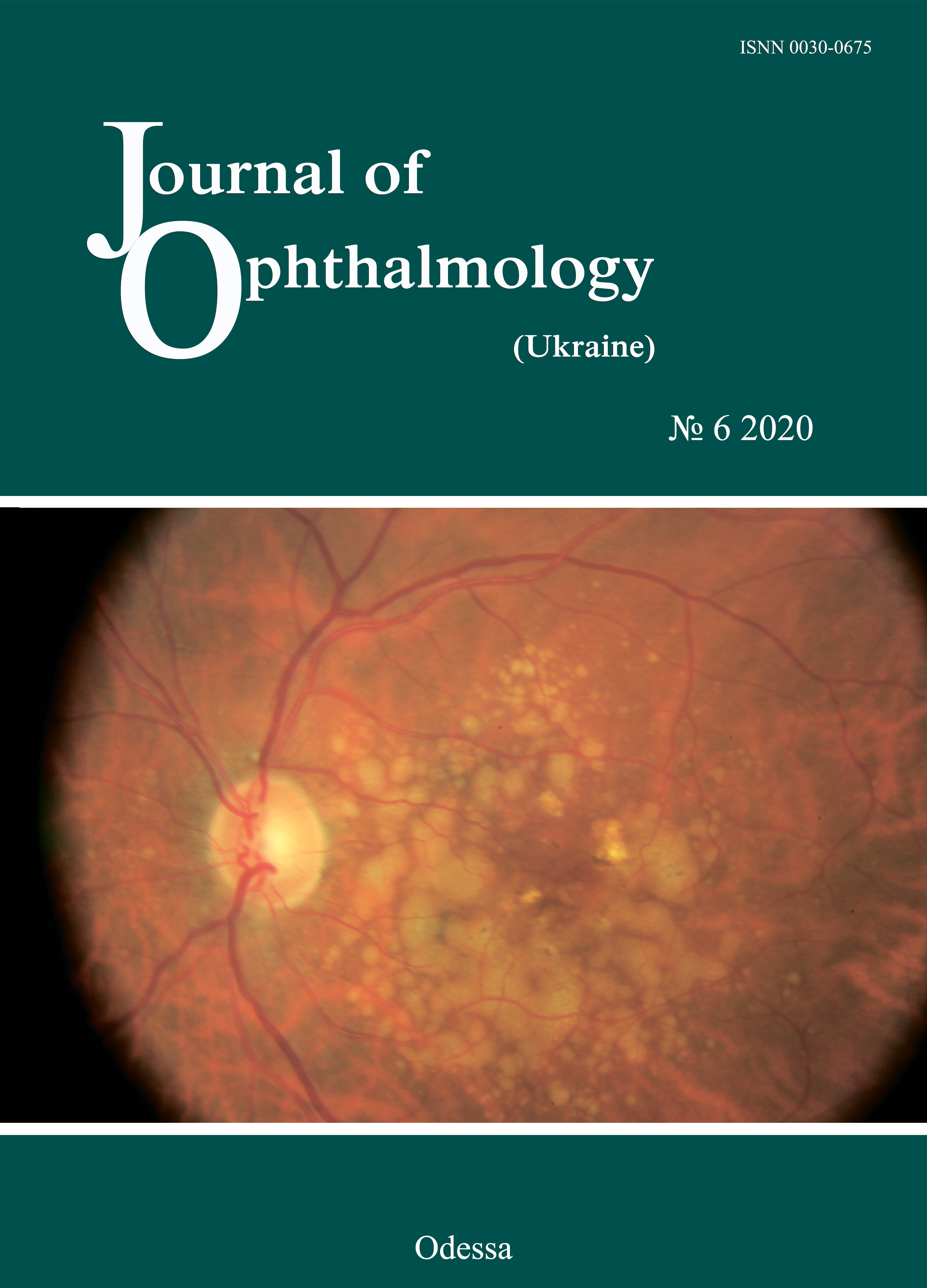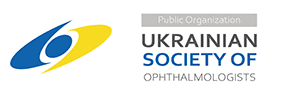Comparing the microflora of the conjunctiva and contact lens in therapeutic soft contact lens wearers
DOI:
https://doi.org/10.31288/oftalmolzh20206813Keywords:
microbiological studies, conjunctiva, soft contact lens, bacterial flora, fungal flor, antibacterial agentsAbstract
Background: More than 125 million (2%) people worldwide wear contact lenses (CL). Rates of CL-associated infections increase with an increase in frequency of wear of CL.
Purpose: To compare the bacterial and fungal microflora of the conjunctiva and contact lens in therapeutic soft contact lens (SCL) wearers.
Material and Methods: We examined the microflora of the conjunctival surface in 80 therapeutic SCL wearers and of the SCL surface in 235 relevant lenses. Monthly therapeutic SCLs that were discarded after being replaced were sent for bacteriological and mycological culture. We used only the data for the years 2016 through 2019 in the analysis.
Results: Pathogenic and/or opportunistic agents were found in samples from 121 SCL (51.5%). Gram positive, Gram negative and fungal species were found in 63.5%, 29.5%, and 7.0%, respectively, of the 121 SCL. Mixed microflora was evident in 14.1% of the 121 SCL. Organisms were isolated from the conjunctiva of 51 (63.8%) of 80 patients. Gram positive, Gram negative and fungal species were found in 75.0%, 20.0%, and 5.0%, respectively, of patients. Mixed microflora was evident in 14.1% of patients.
Conclusion: Organisms were isolated from the conjunctiva of 51 (63.8%) of 80 therapeutic SCL wearers and from 121 (51.5%) of 235 SCL (p = 0.06). Conjunctival swabs and SCL swabs harbored pathogenic microorganisms on 26.2% and 26.9% of occasions, respectively. On 32.5% of occasions, there was a difference in species isolated from conjunctival swabs and SCL swabs. This stresses the need for microbiological studies of the conjunctiva and contact lenses in SCL wearers.
References
1.Böhm MR, Prokosch V, Merté RL, Koch R, Busse H, Stupp T. Böhm MR, et al. [Microbiological Analysis in Contact Lens-Associated Keratits]. Klin Monatsbl Augenheilkd. 228(9):808-14. German.https://doi.org/10.1055/s-0029-1245840
2.Willcox MD, Power KN, Stapleton F, et al. Potential sources of bacteria that are isolated from contact lenses during wear. Optom Vis Sci. 1997 Dec;74(12):1030-8.https://doi.org/10.1097/00006324-199712000-00025
3.Mowrey-McKee MF, Sampson HJ, Proskin HM. Microbial contamination of hydrophilic contact lenses. Part II: Quantitation of microbes after patient handling and after aseptic removal from the eye. CLAO J. 1992 Oct;18(4):240-4.
4.Boost MV, Cho P. Microbial flora of tears of orthokeratology patients, and microbial contamination of contact lenses and contact lens accessories. Optom Vis Sci. 2005 Jun;82(6):451-8.https://doi.org/10.1097/01.opx.0000168587.72893.ec
5.Iskeleli G, Bahar H, Unal M, et al. Microbiologic evaluation of frequent-replacement soft contact lenses. CLAO J. 2002 Oct;28(4):192-5.doi: 10.1097/01.ICL.0000024118.45191.9B.
6.Yung MS, Boost M, Cho P, Yap M. Microbial contamination of contact lenses and lens care accessories of soft contact lens wearers (university students) in Hong Kong. Ophthalmic Physiol Opt. 2007 Jan;27(1):11-21.https://doi.org/10.1111/j.1475-1313.2006.00427.x
7.Iskeleli G, Bahar H, Eroglu E, Torun MM, Ozkan S. Microbial changes in conjunctival flora with 30-day continuous-wear silicone hydrogel contact lenses. Eye Contact Lens. 2005 May;31(3):124-6.f. https://doi.org/10.1097/01.ICL.0000141923.63458.DF
8.Stapleton F, Willcox MD, Fleming CM, et al. Changes to the ocular biota with time in extended- and daily-wear disposable contact lens use. Infect Immun. 1995 Nov;63(11):4501-5.https://doi.org/10.1128/iai.63.11.4501-4505.1995
9.Fleiszig SM, Efron N. Microbial flora in eyes of current and former contact lens wearers. J Clin Microbiol. 1992 May; 30(5): 1156-61.https://doi.org/10.1128/jcm.30.5.1156-1161.1992
10.Szczotka-Flynn LB, Bajaksouzian S, Jacobs MR, Rimm A. Risk Factors for Contact Lens Bacterial Contamination During Continuous Wear. Optom Vis Sci. 2009 Nov;86(11):1216-26.https://doi.org/10.1097/OPX.0b013e3181bbca18
11.Kozer-Bilgin L, Demir N, Altan-Yaycioglu R. Microbiological evaluation of contact lenses and contact lens disinfection solutions in an asymptomatic population and in medical personnel. CLAO J. 1999 Oct;25(4):228-32.
12.Thakue DV, Gaikwad UN. Microbial Contamination of Soft Contact Lenses & Accessories in Asymptomatic Contact Lens Users. Indian J Med Res. 2014 Aug;140(2):307-9.
Downloads
Published
How to Cite
Issue
Section
License
Copyright (c) 2025 Т. А. Великсар, Т. Б. Гайдамака, Г. И. Дрожжина, А. Л. Молодая, О. Н. Иванова, Л. В. Доленко, В. Н. Конах

This work is licensed under a Creative Commons Attribution 4.0 International License.
This work is licensed under a Creative Commons Attribution 4.0 International (CC BY 4.0) that allows users to read, download, copy, distribute, print, search, or link to the full texts of the articles, or use them for any other lawful purpose, without asking prior permission from the publisher or the author as long as they cite the source.
COPYRIGHT NOTICE
Authors who publish in this journal agree to the following terms:
- Authors hold copyright immediately after publication of their works and retain publishing rights without any restrictions.
- The copyright commencement date complies the publication date of the issue, where the article is included in.
DEPOSIT POLICY
- Authors are permitted and encouraged to post their work online (e.g., in institutional repositories or on their website) during the editorial process, as it can lead to productive exchanges, as well as earlier and greater citation of published work.
- Authors are able to enter into separate, additional contractual arrangements for the non-exclusive distribution of the journal's published version of the work with an acknowledgement of its initial publication in this journal.
- Post-print (post-refereeing manuscript version) and publisher's PDF-version self-archiving is allowed.
- Archiving the pre-print (pre-refereeing manuscript version) not allowed.












